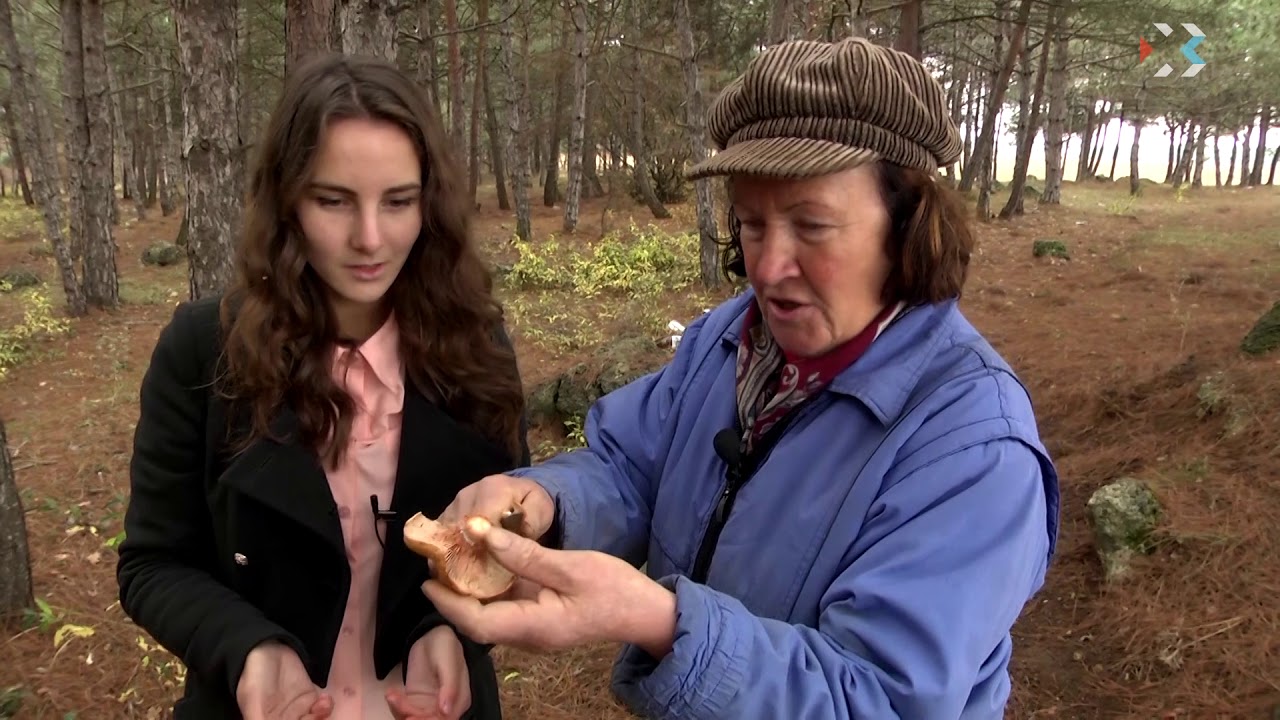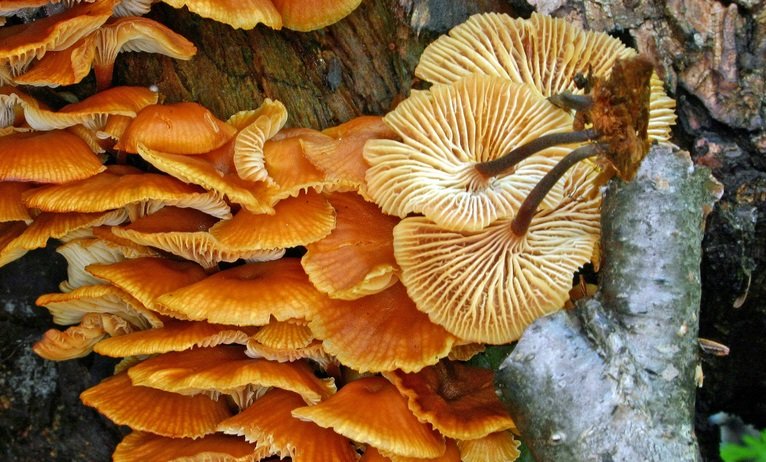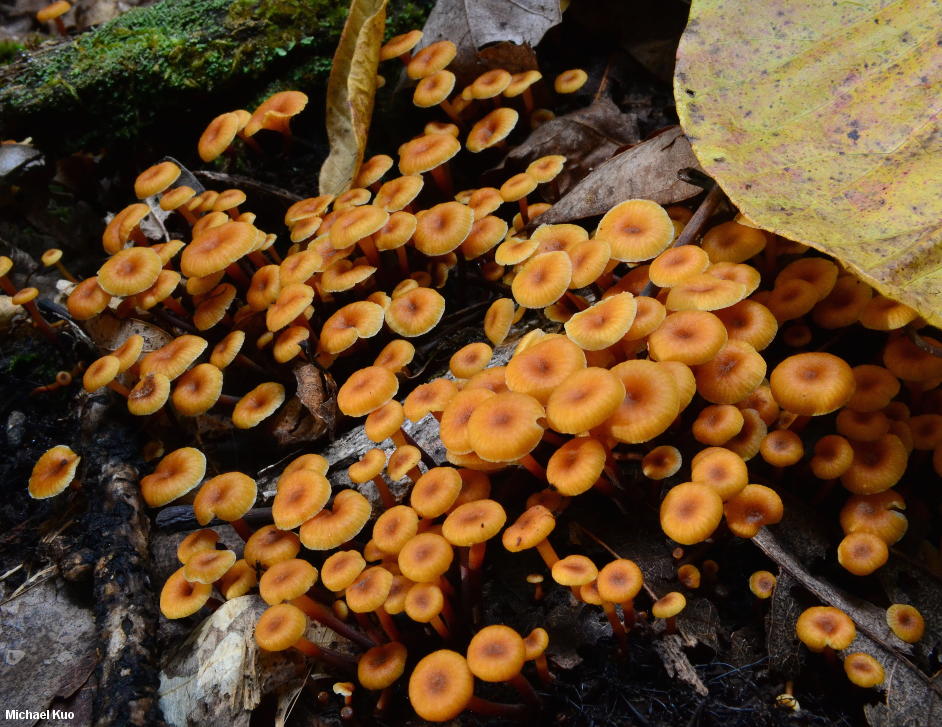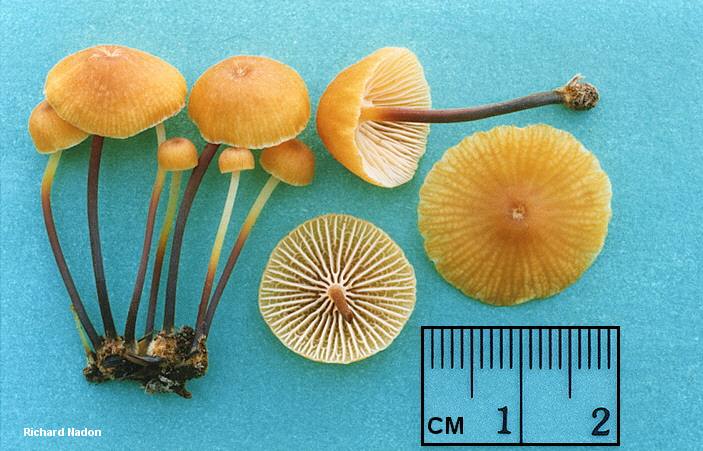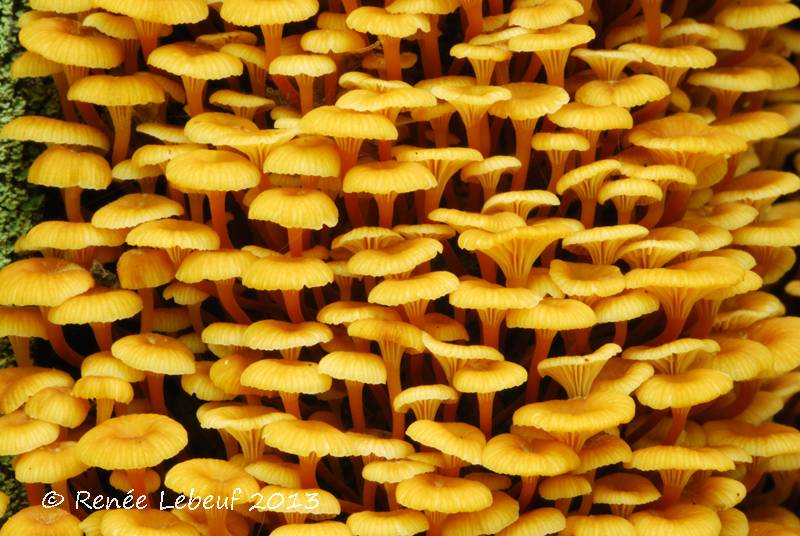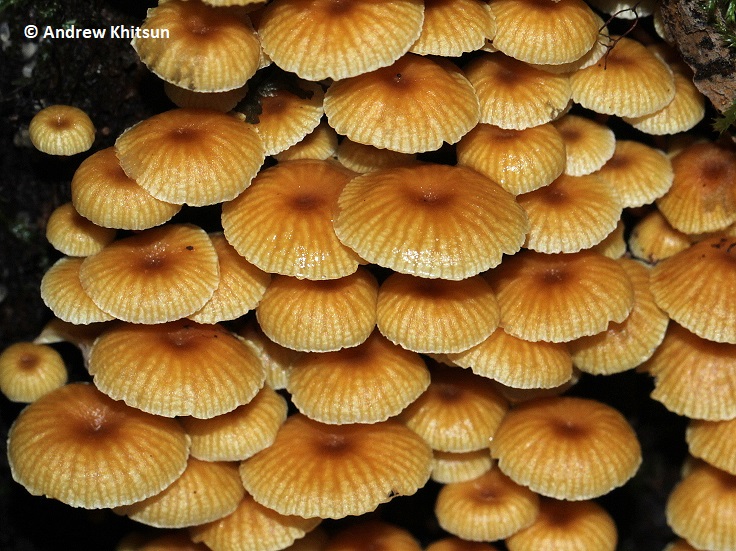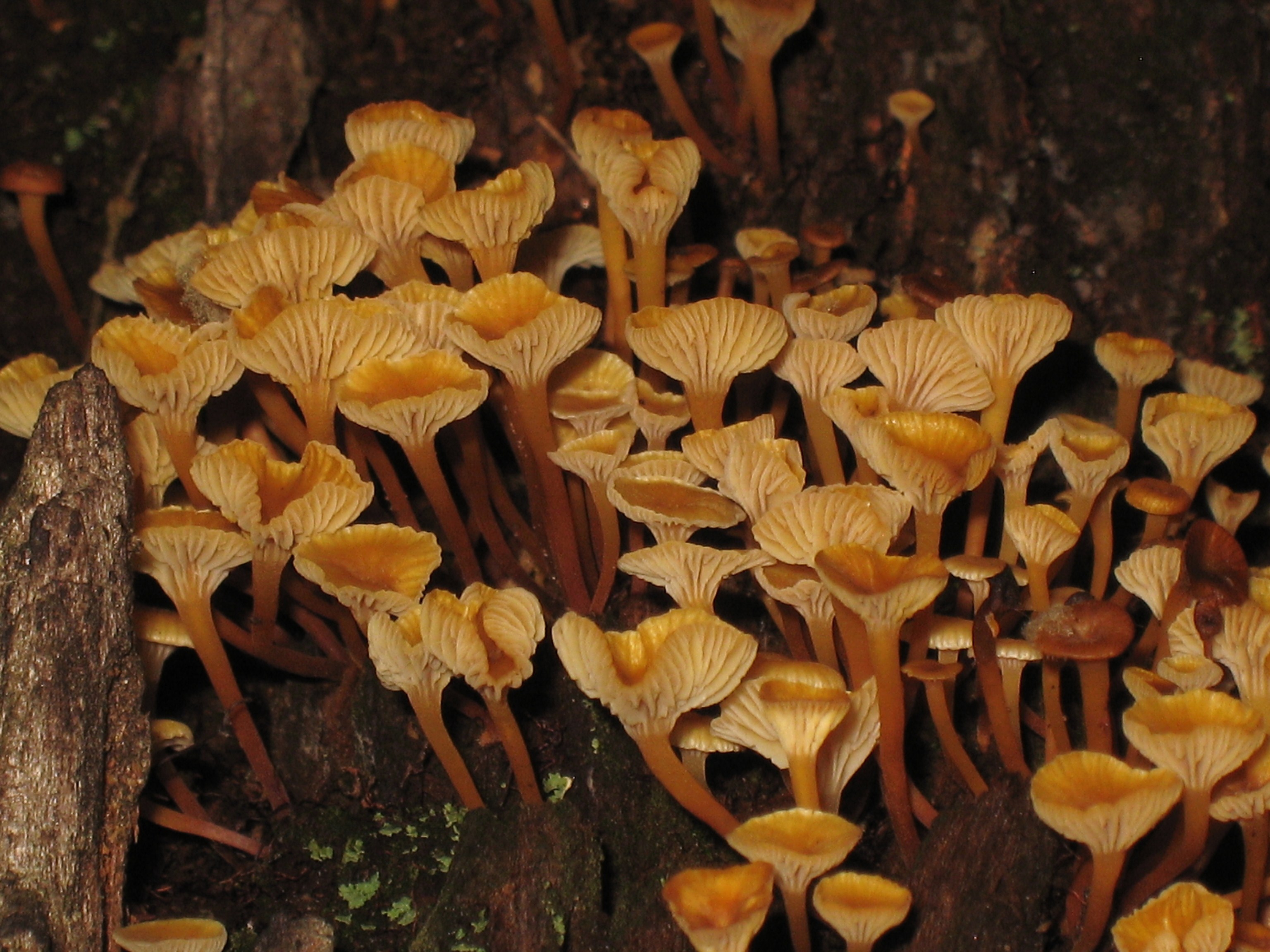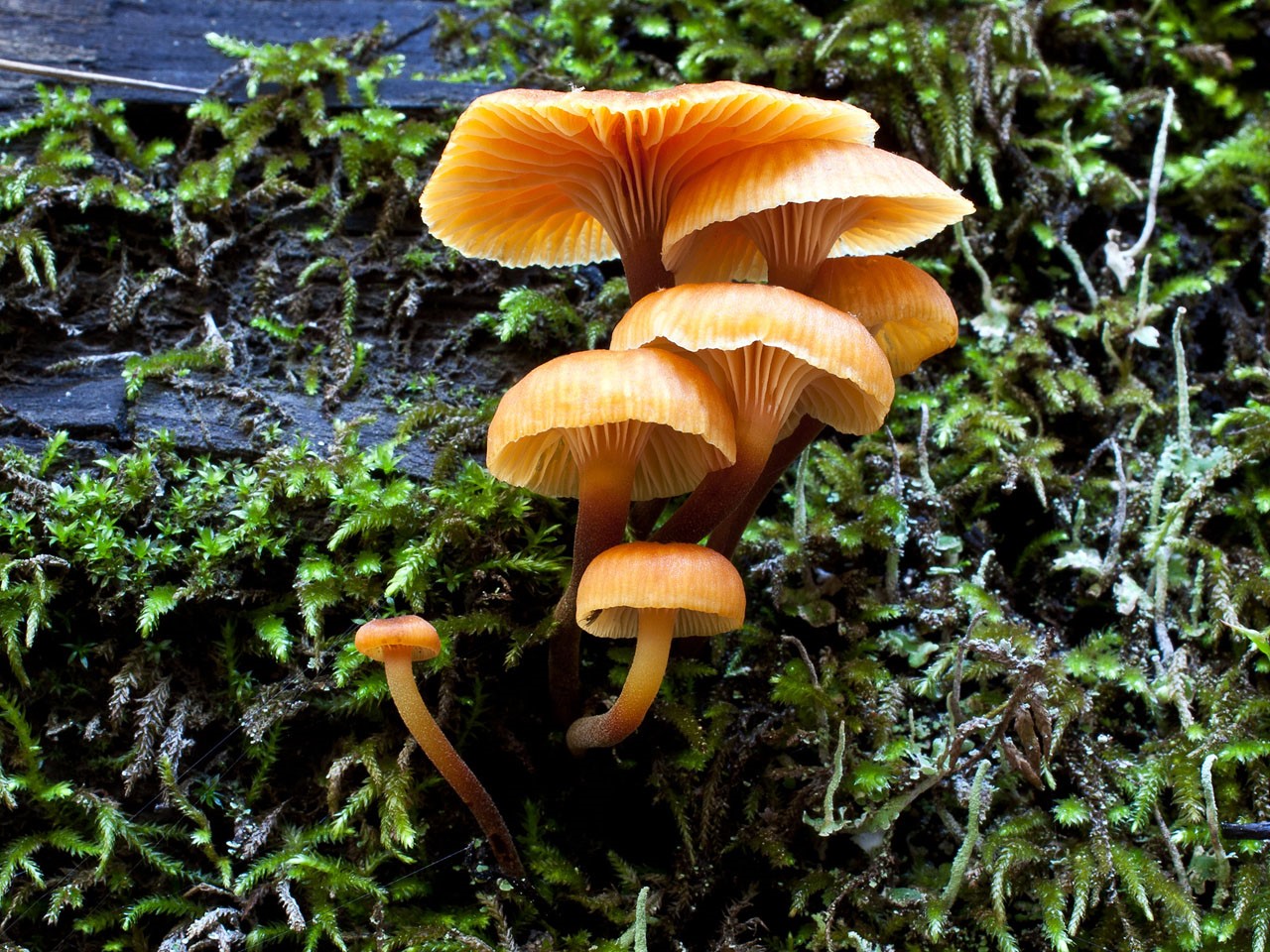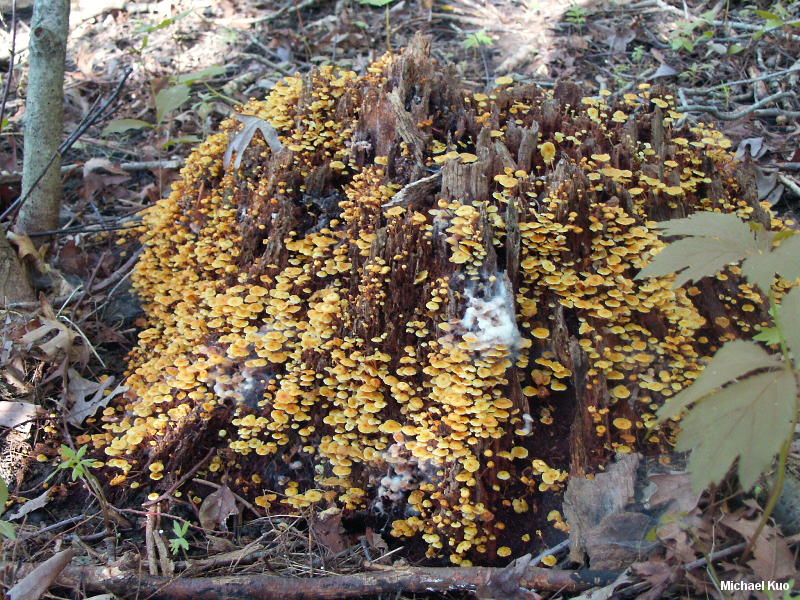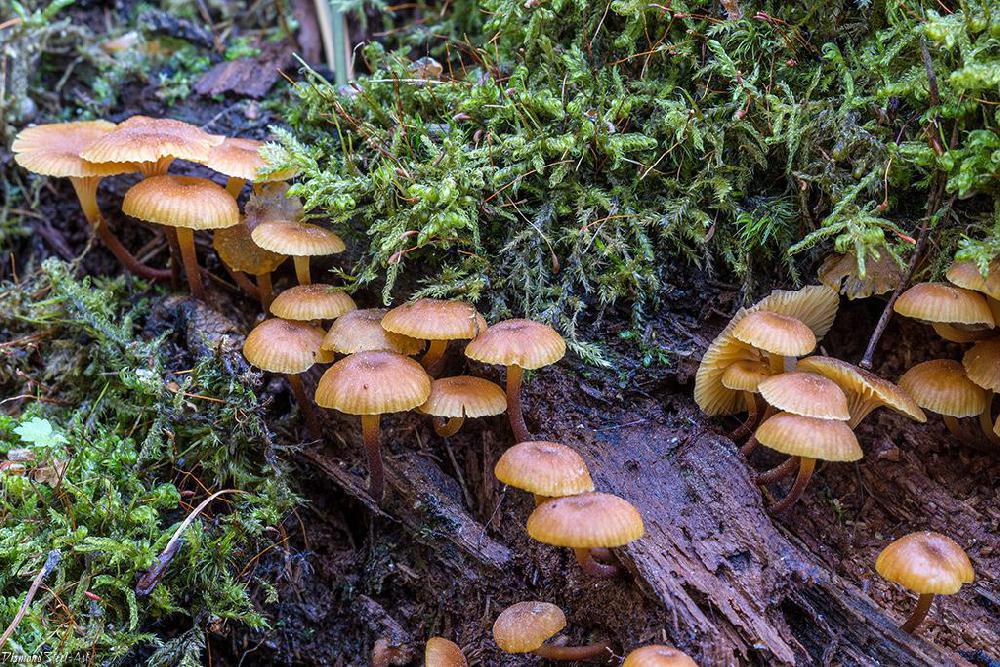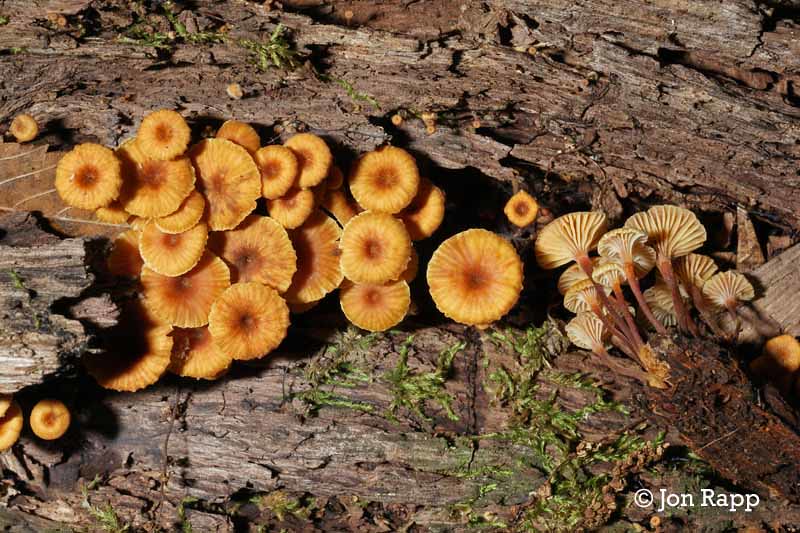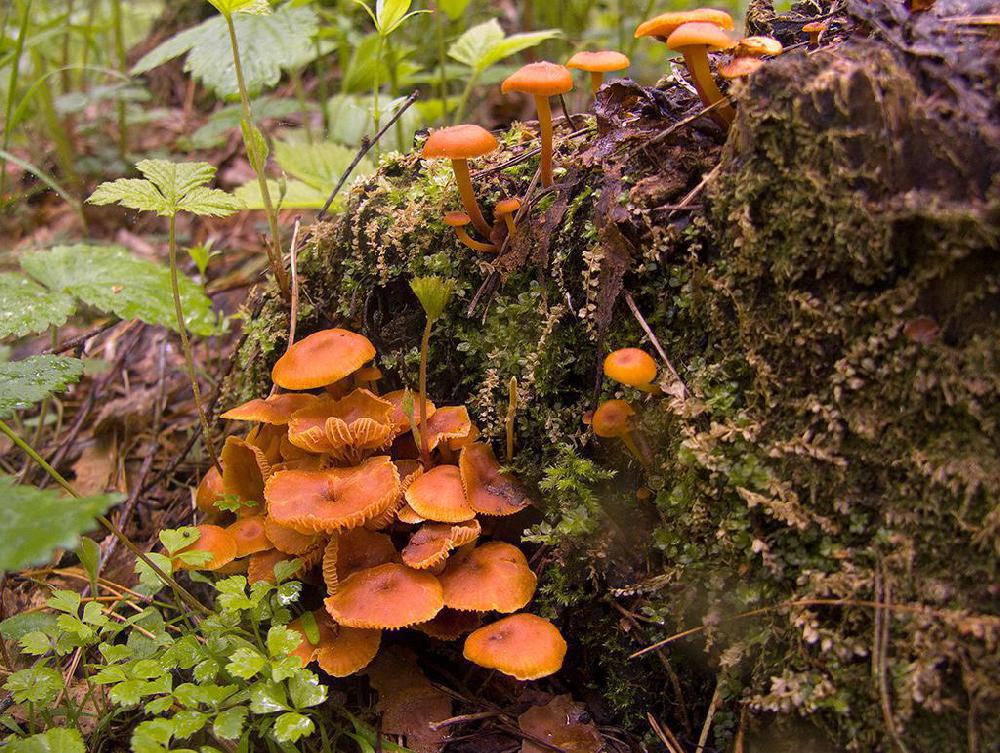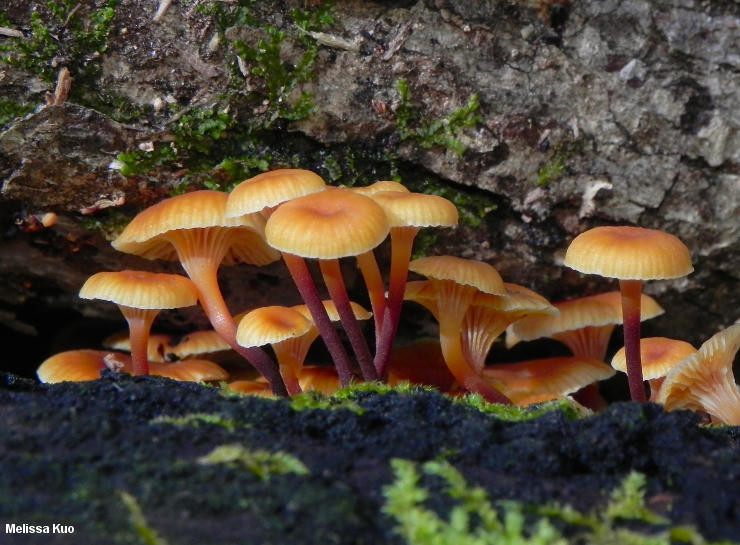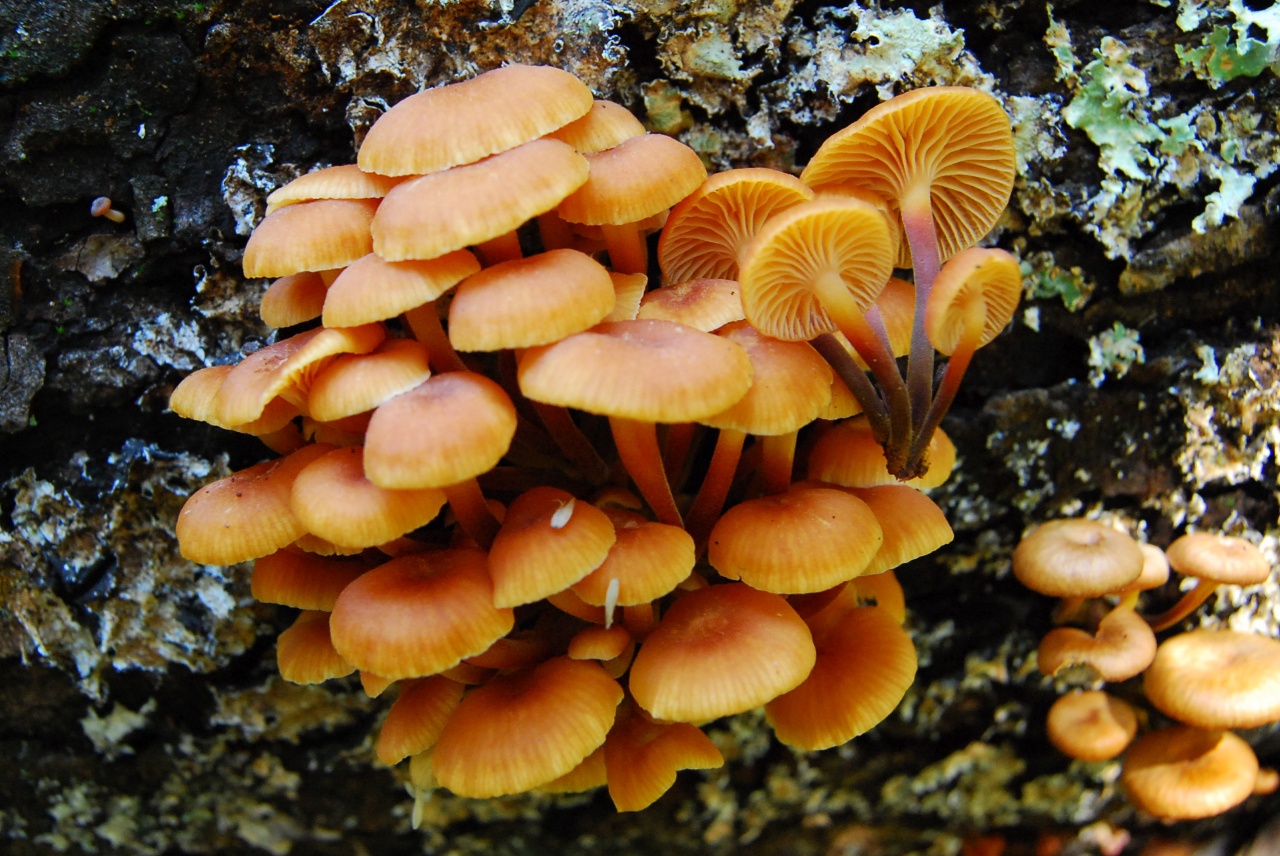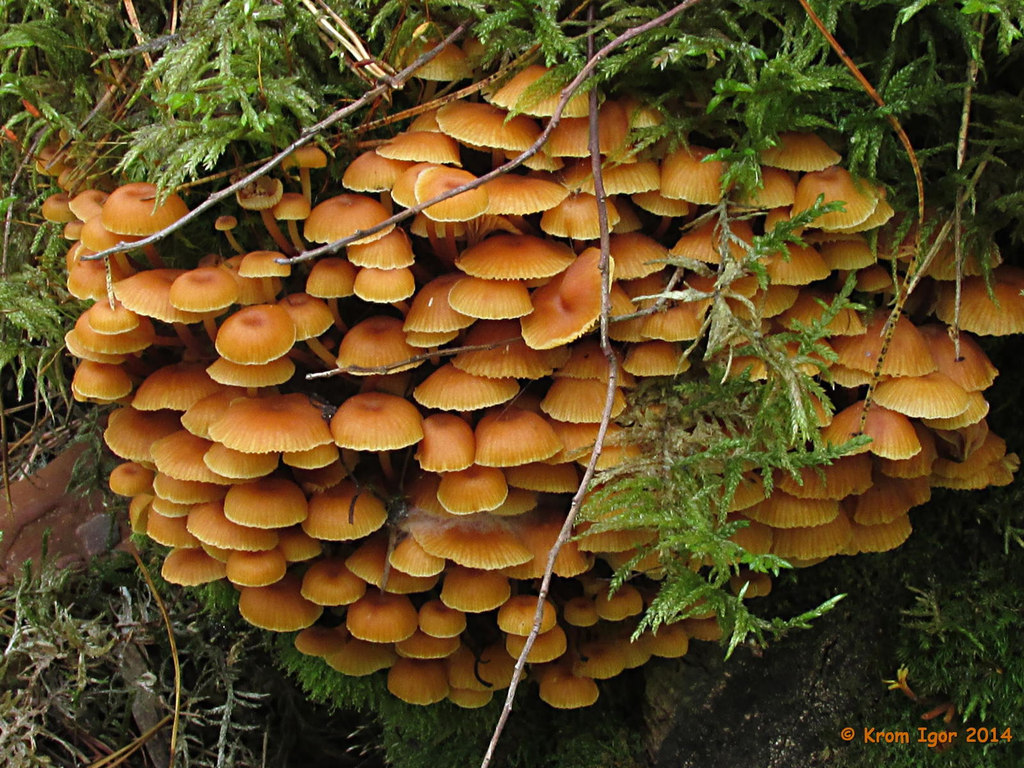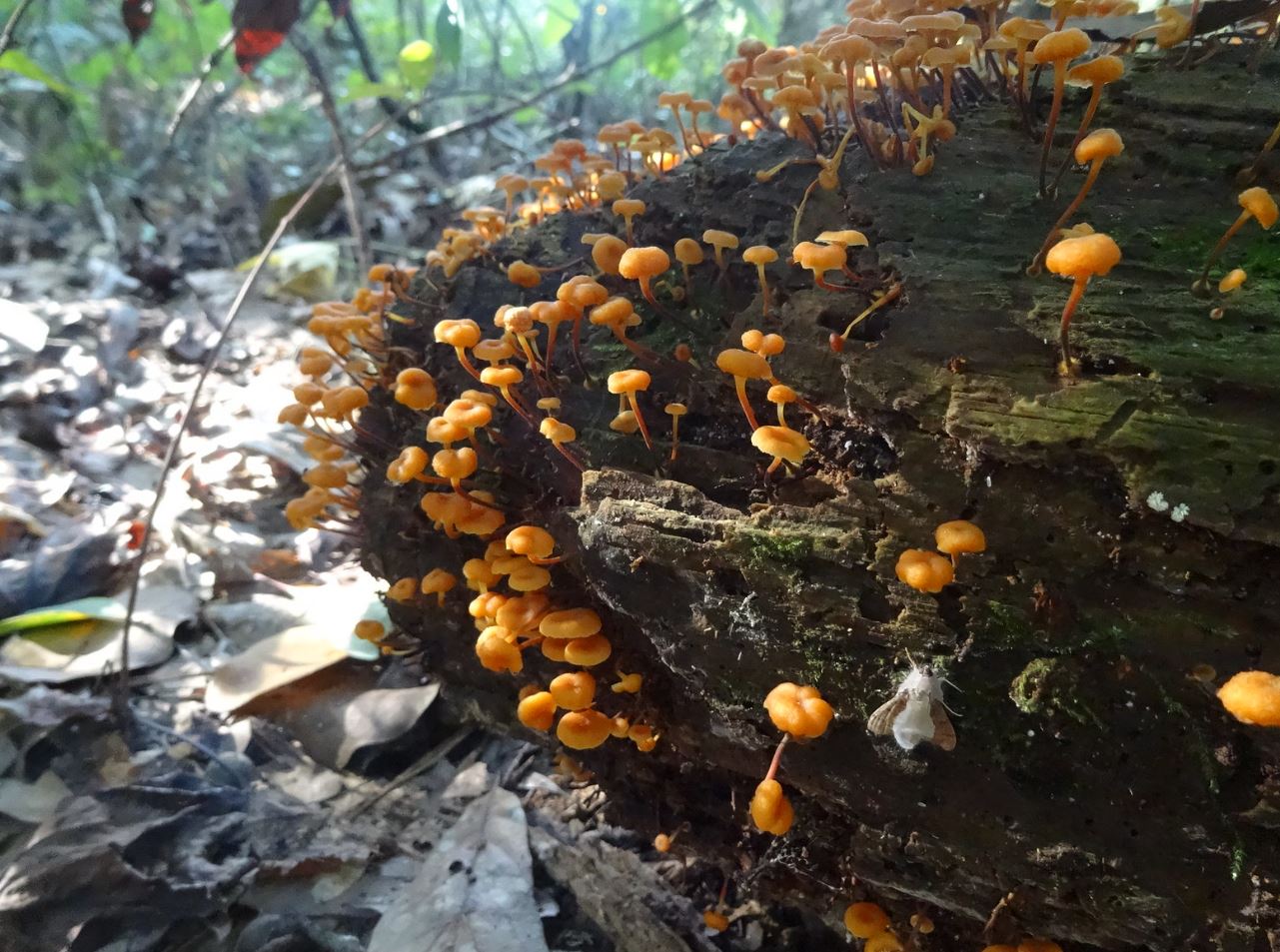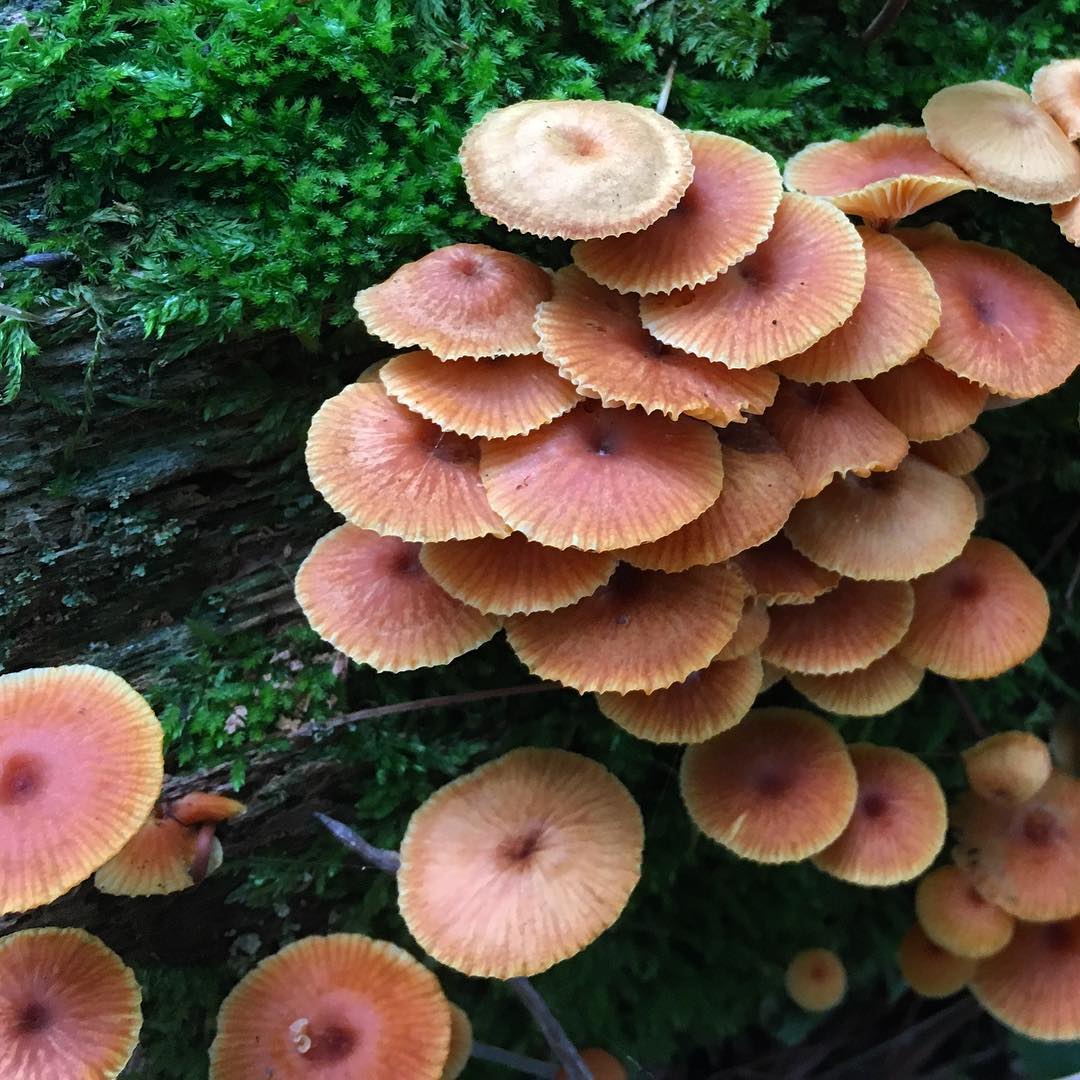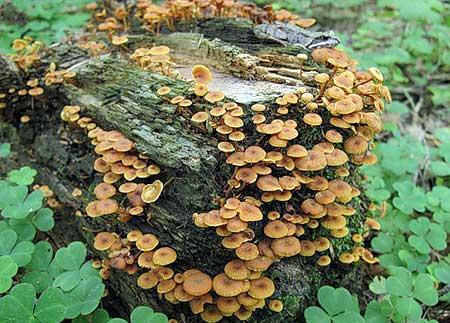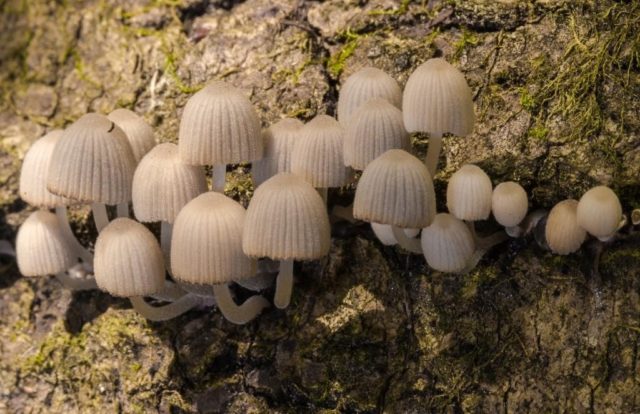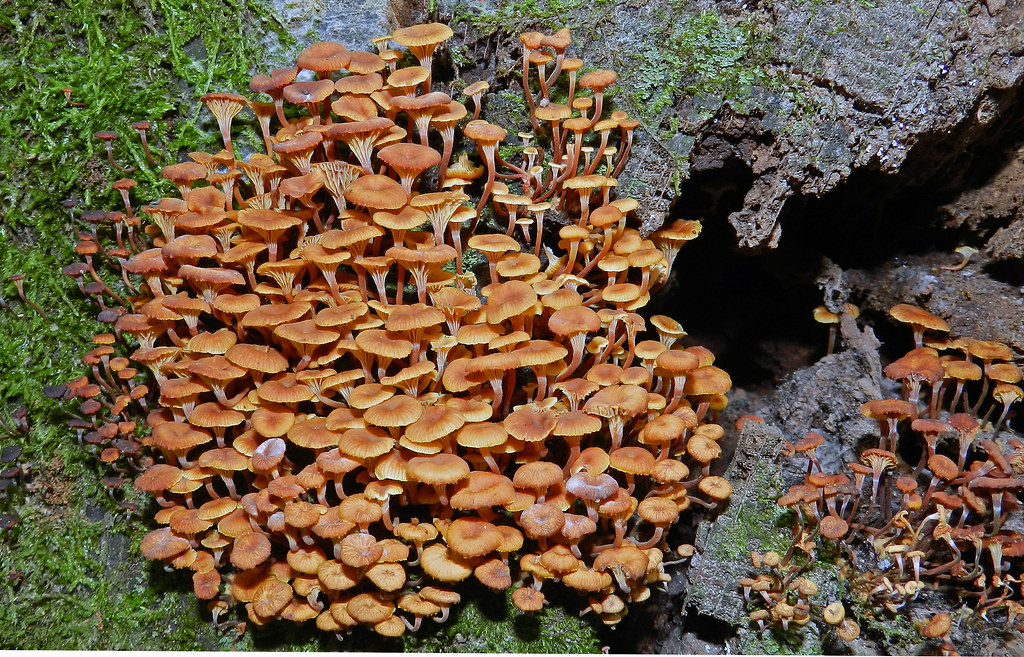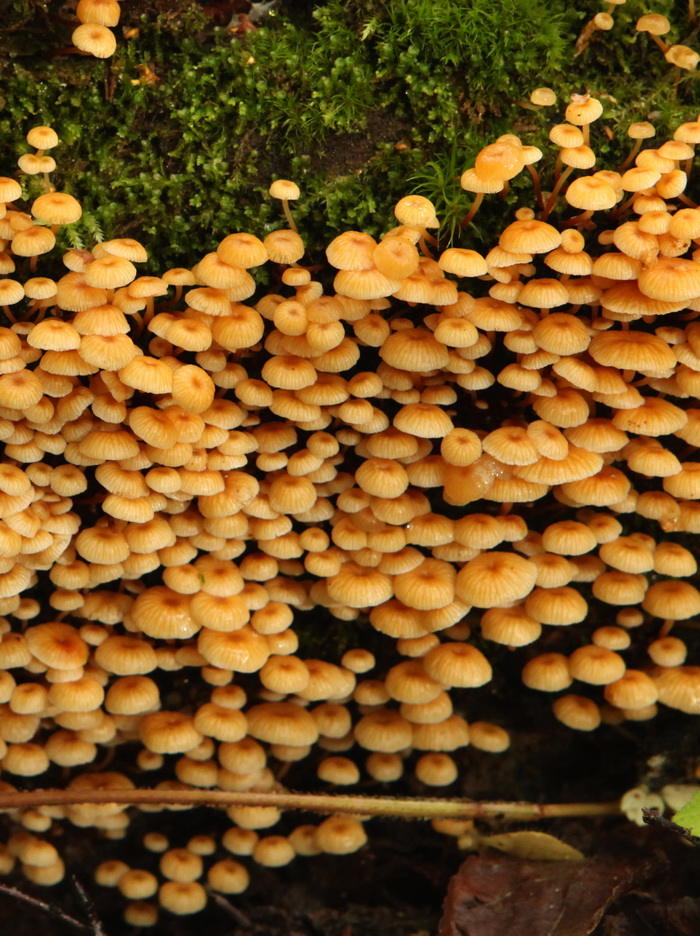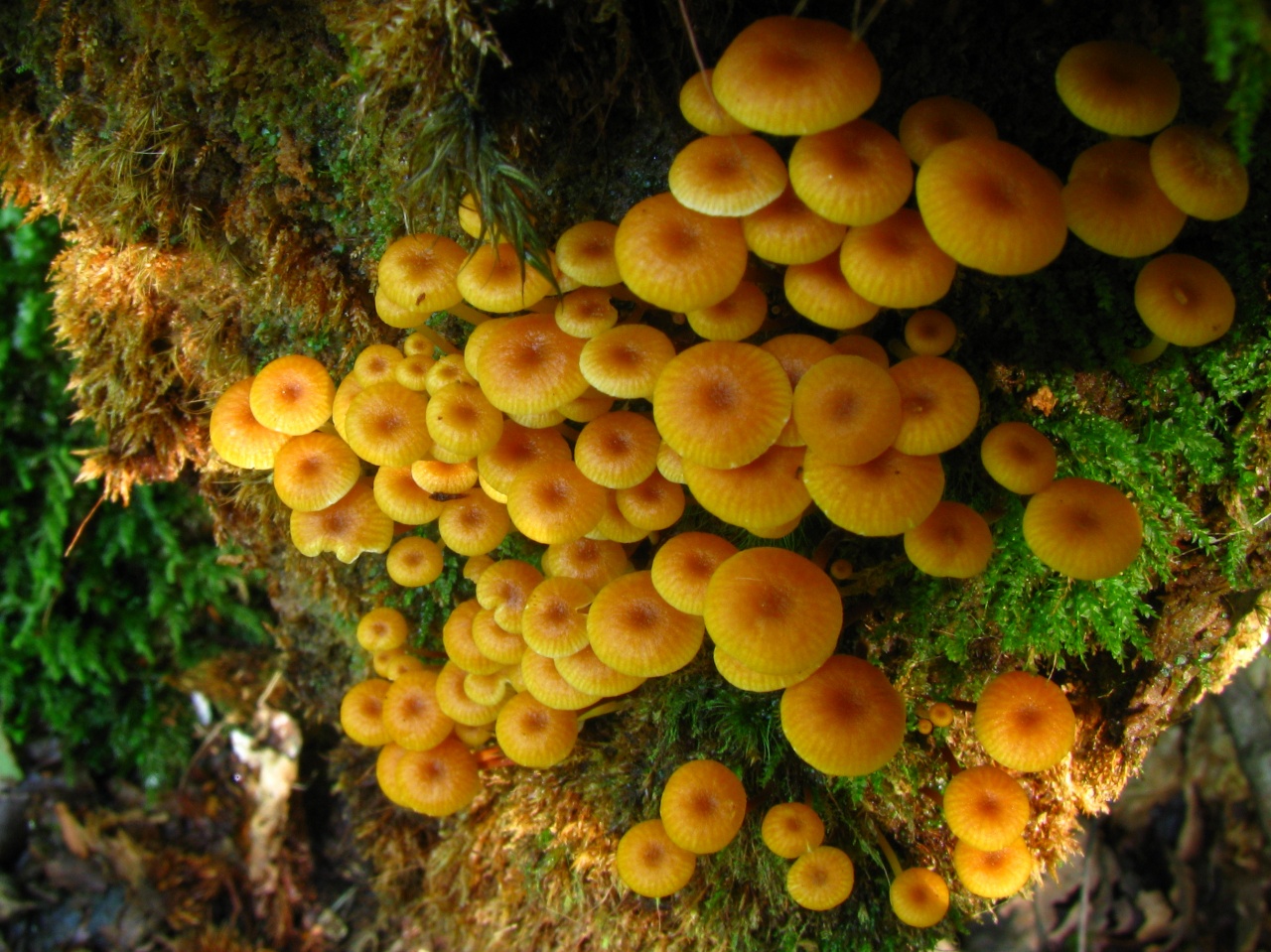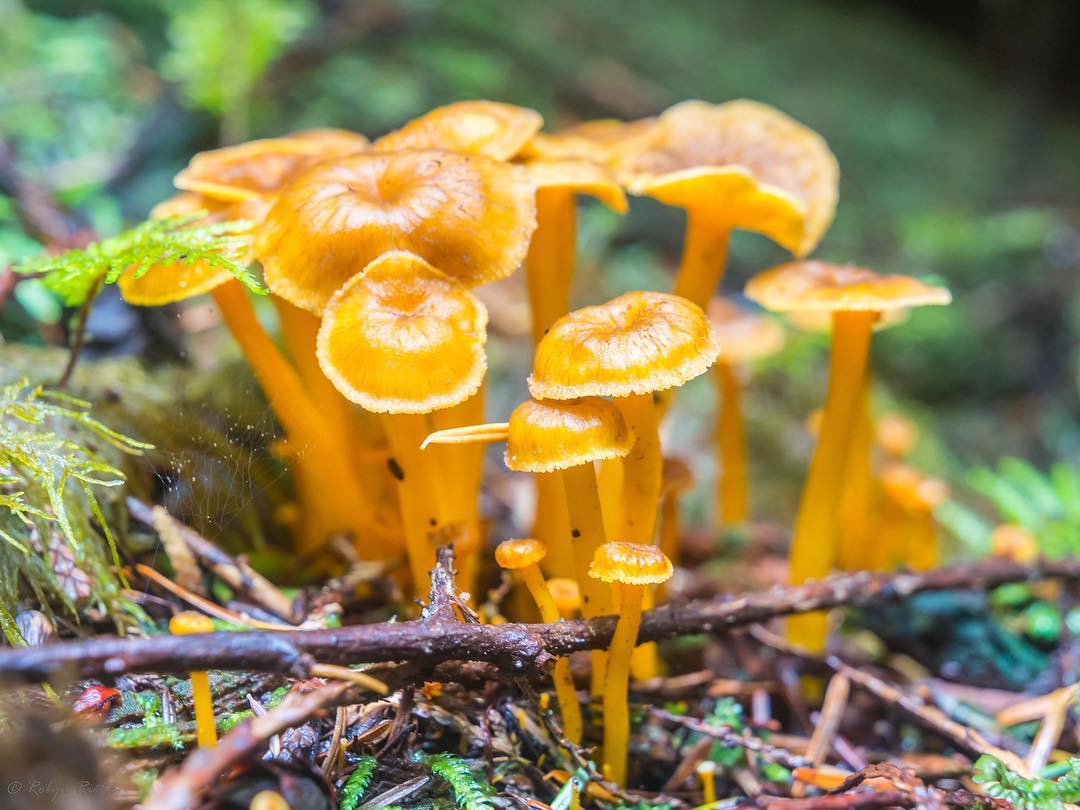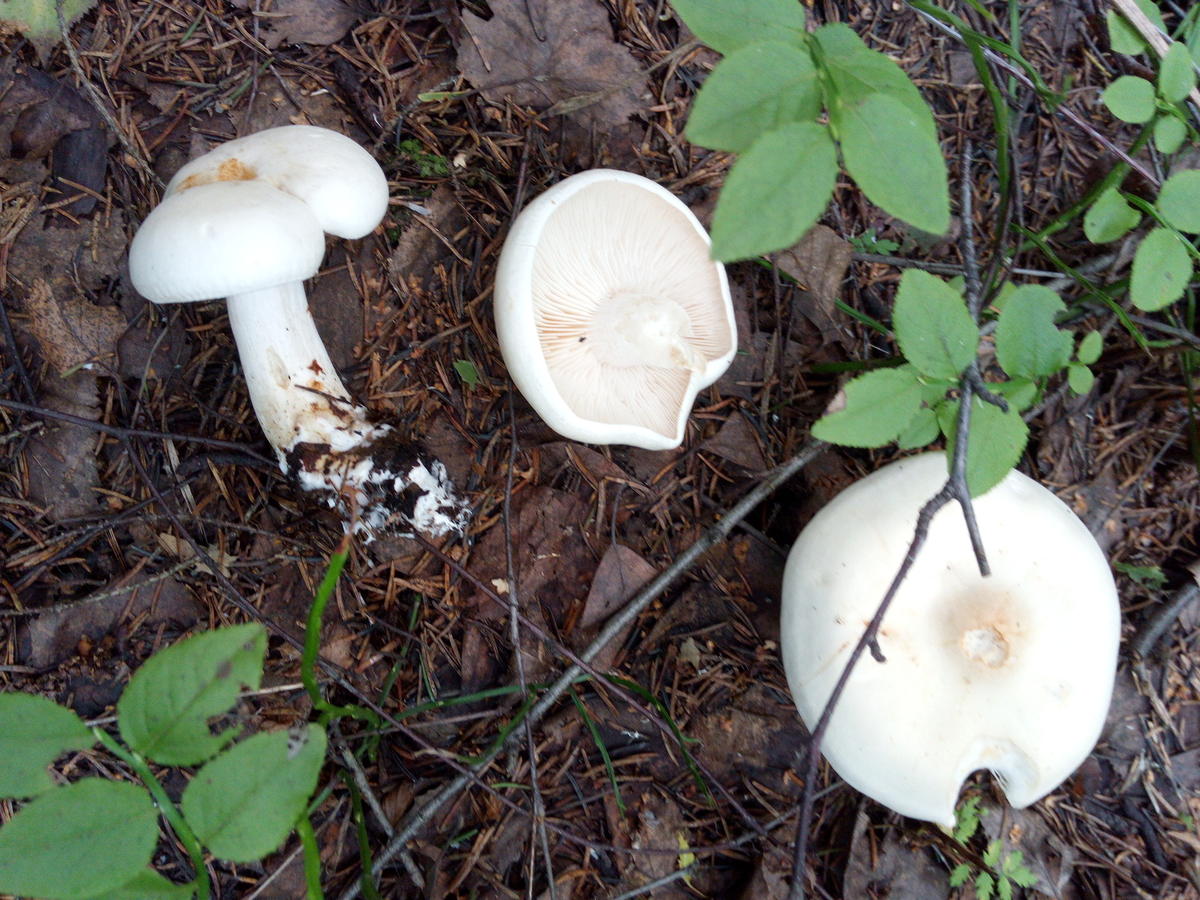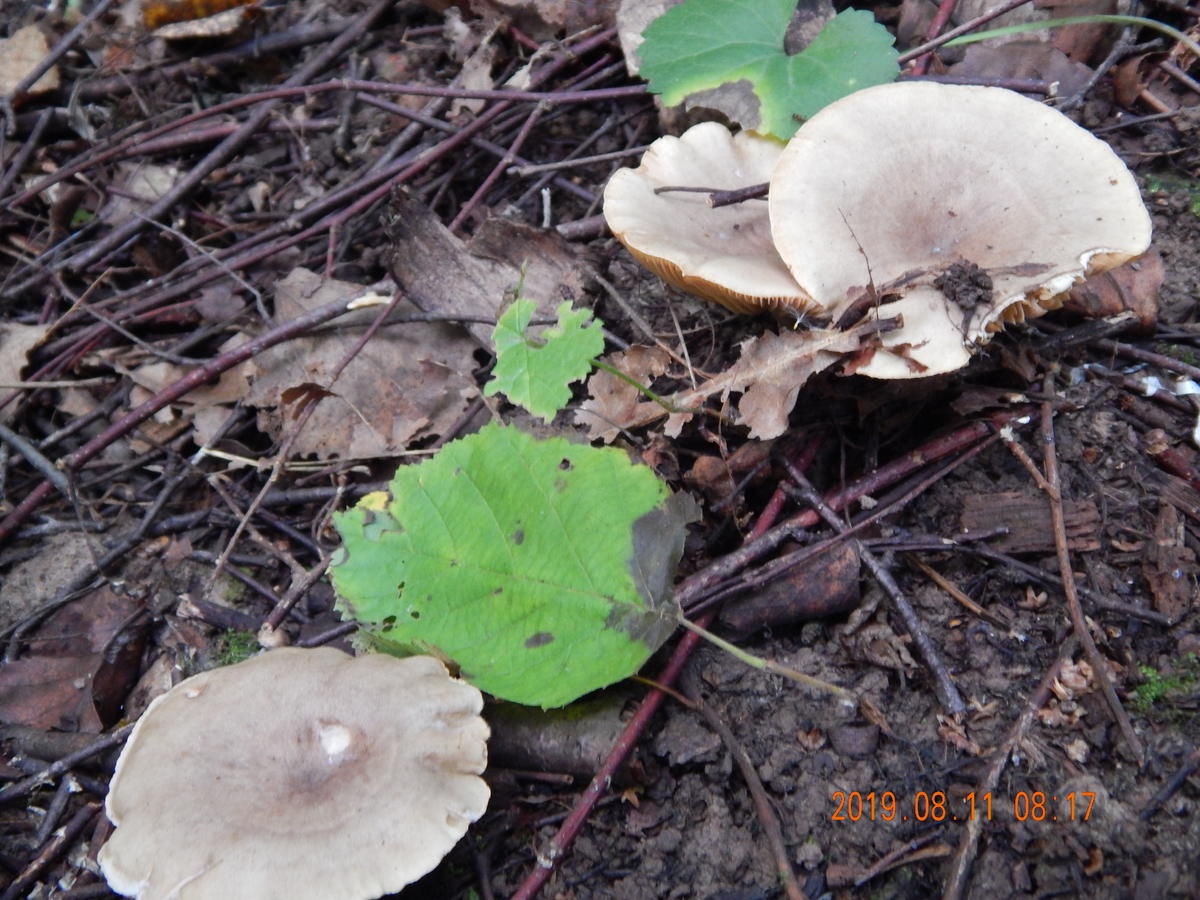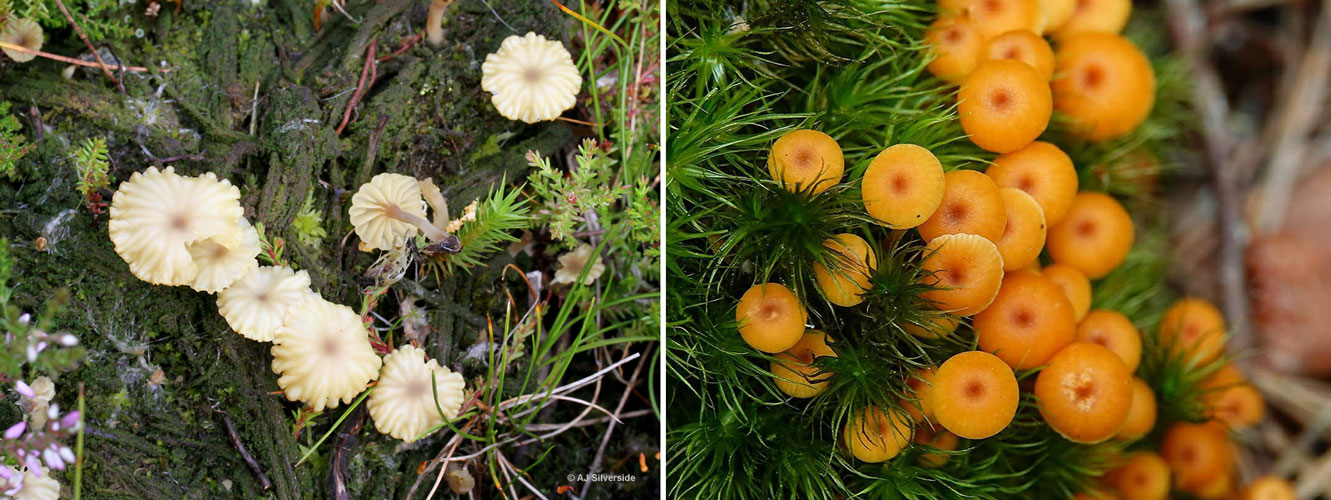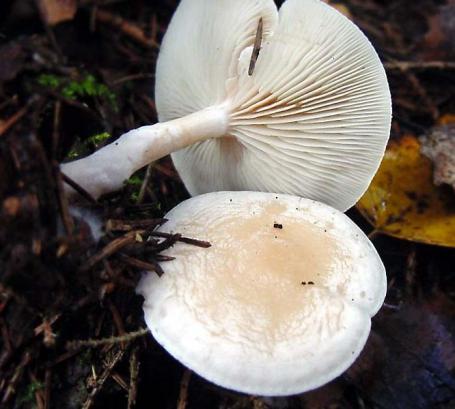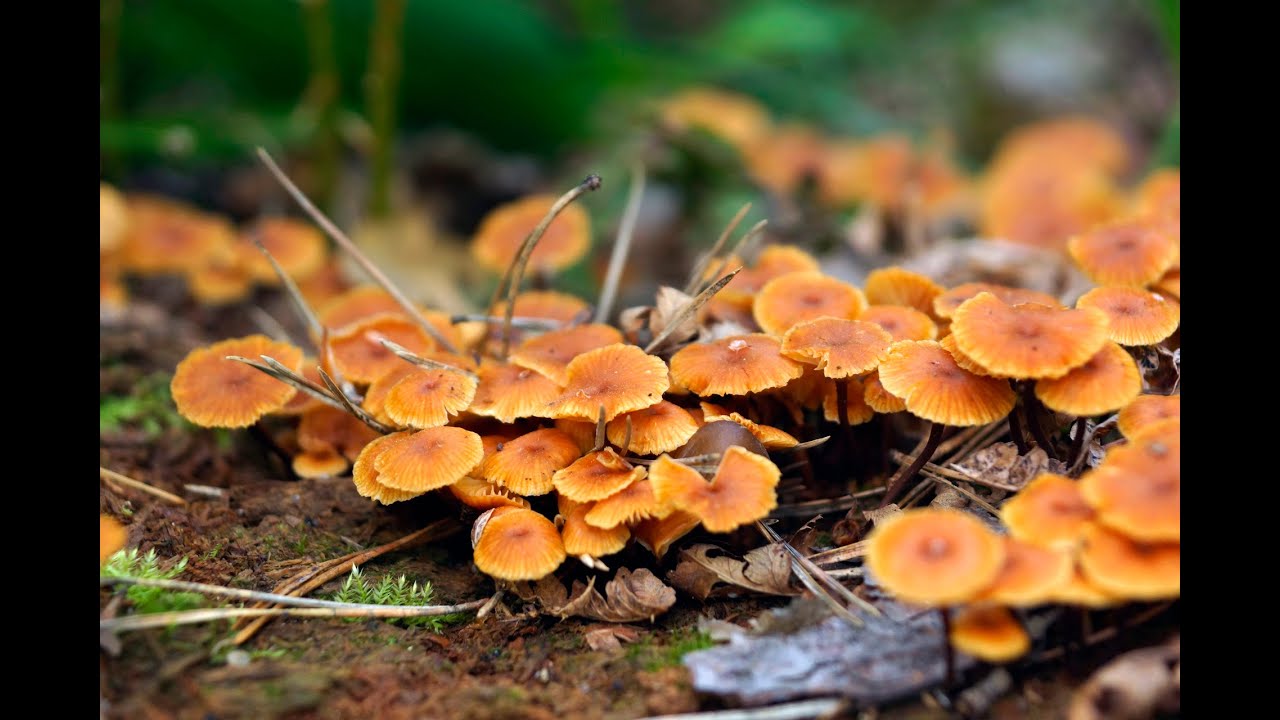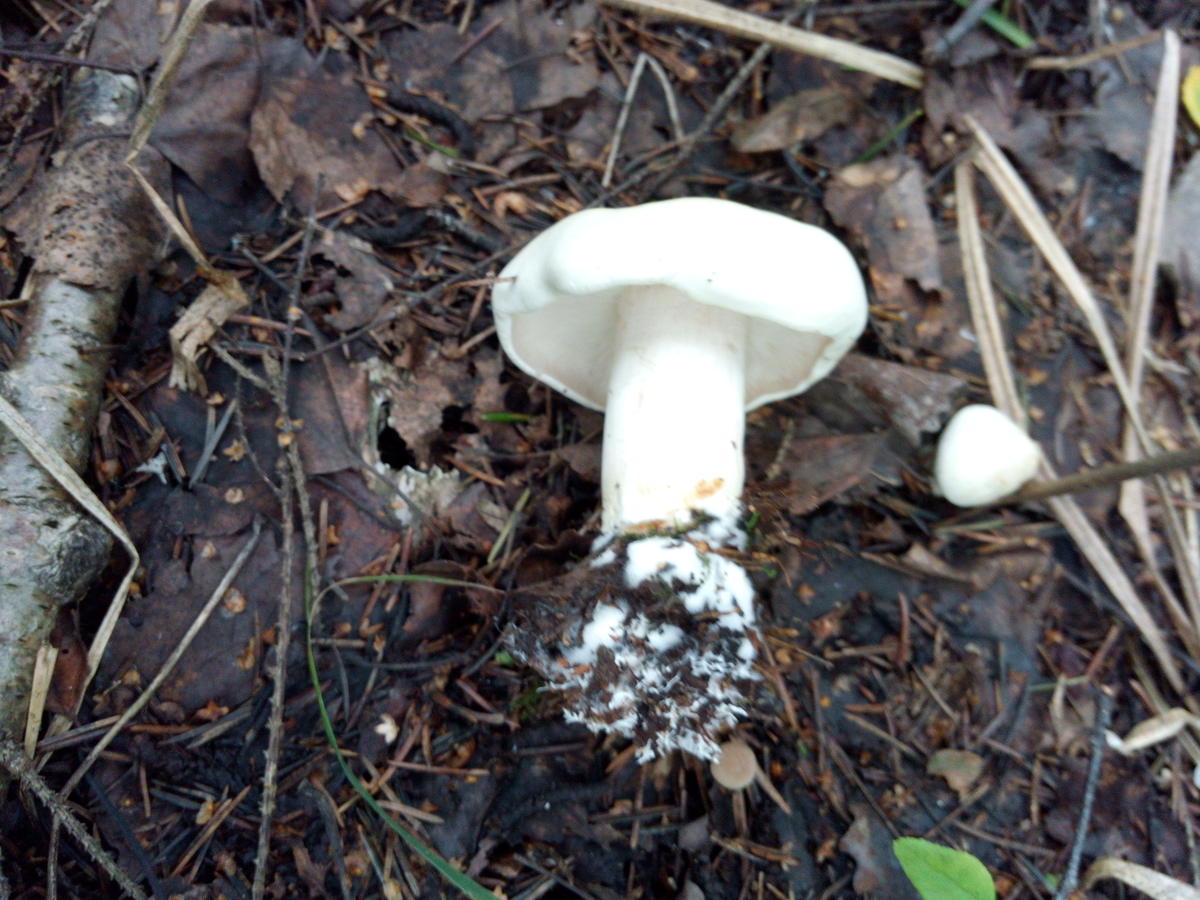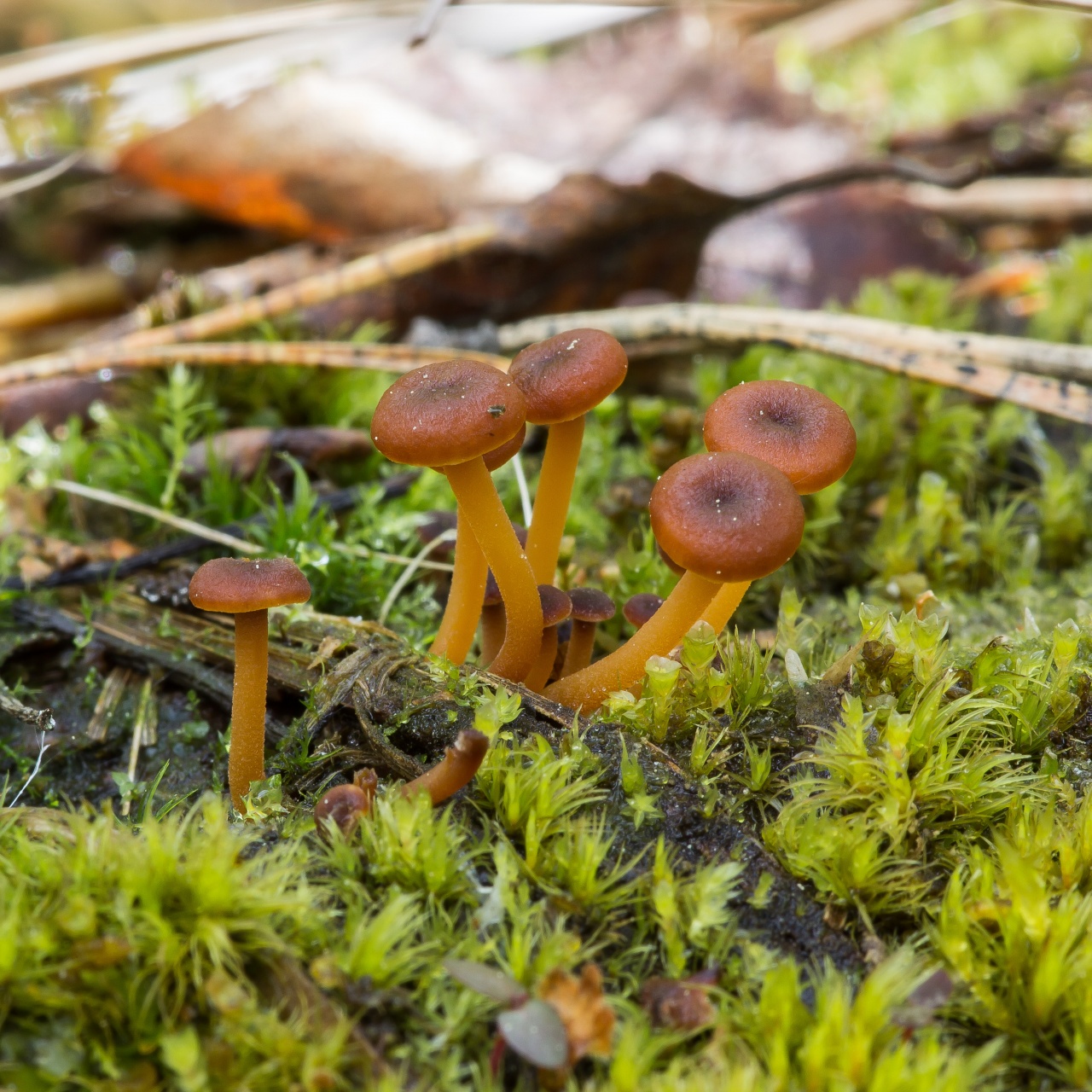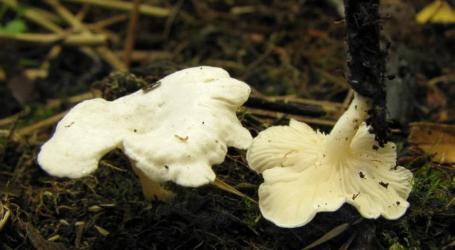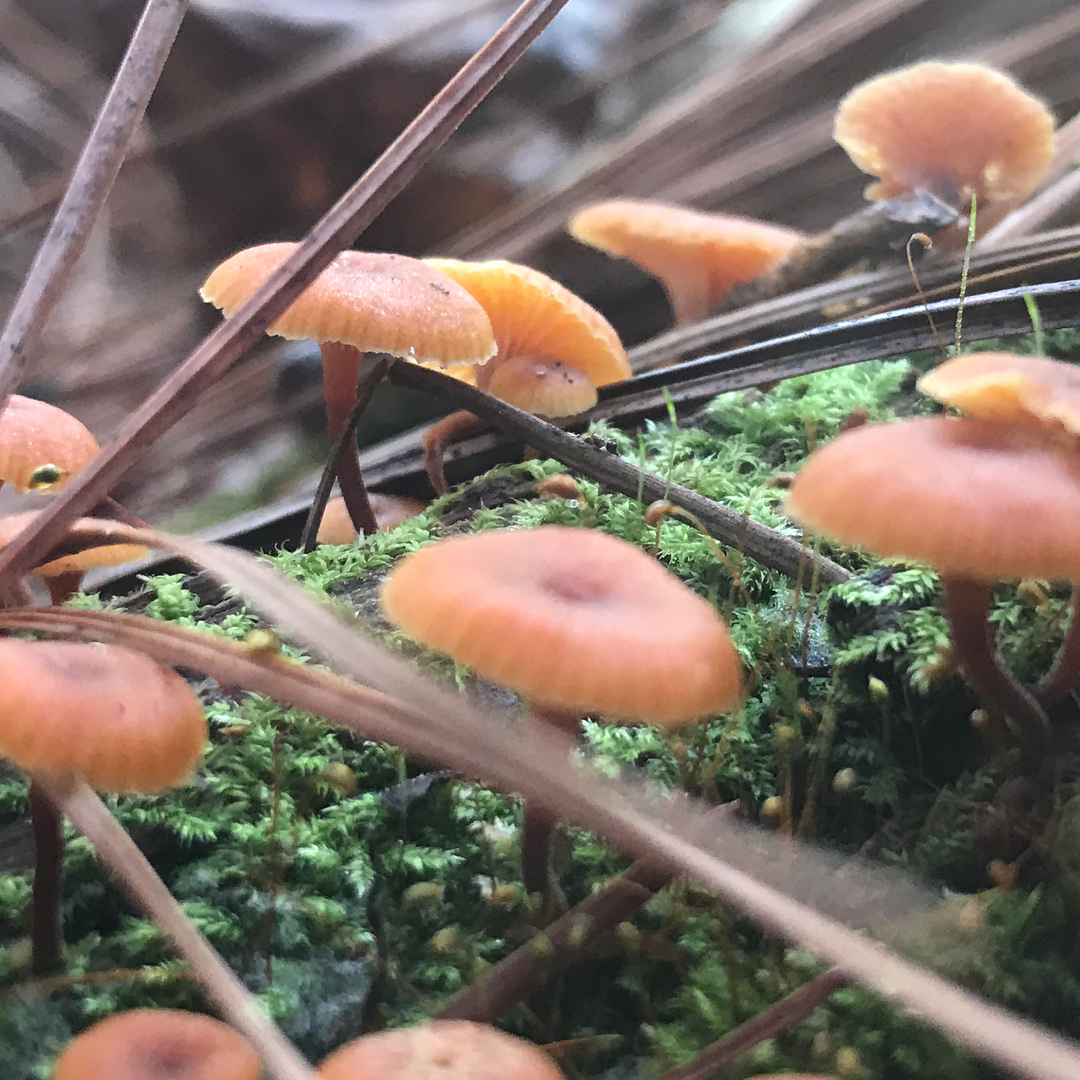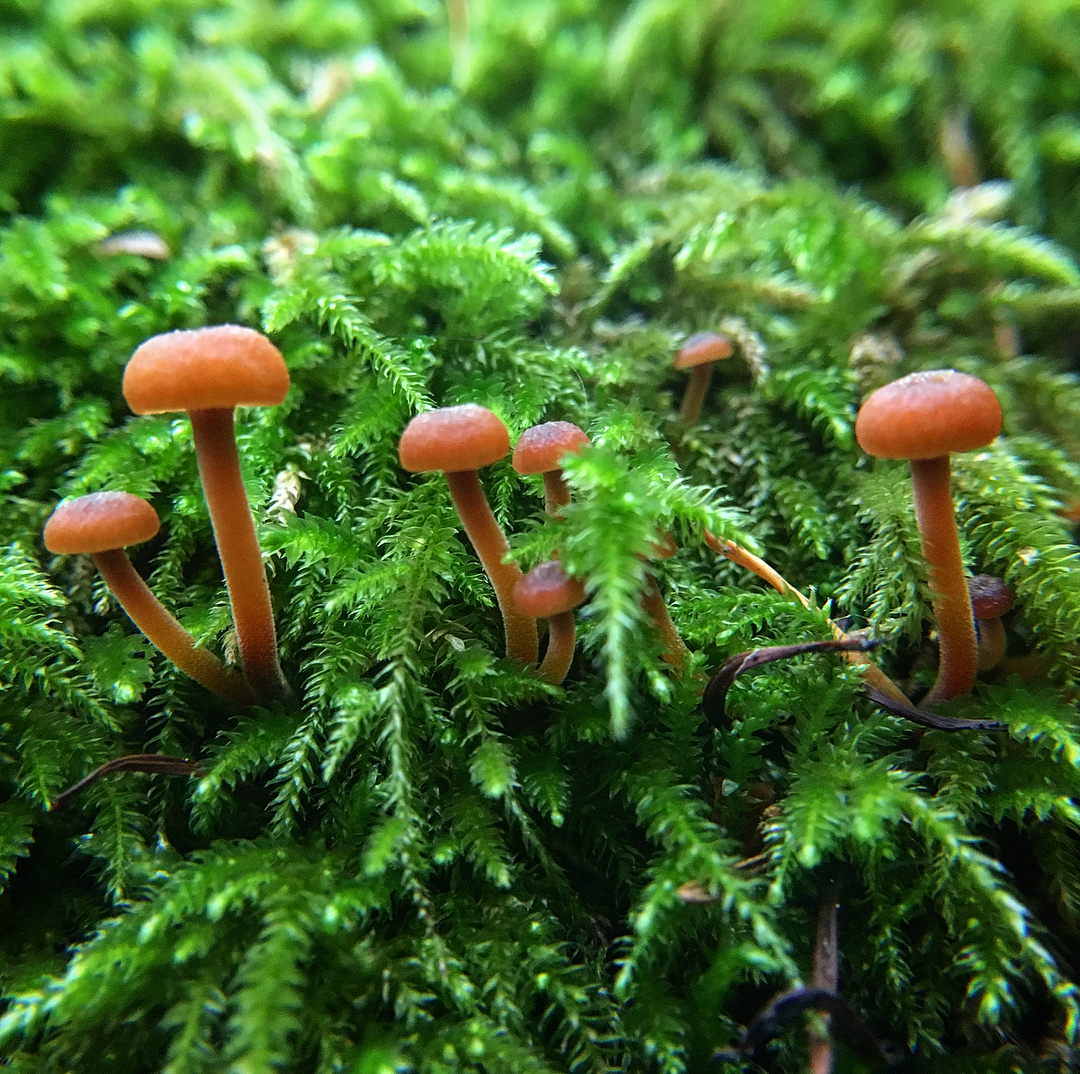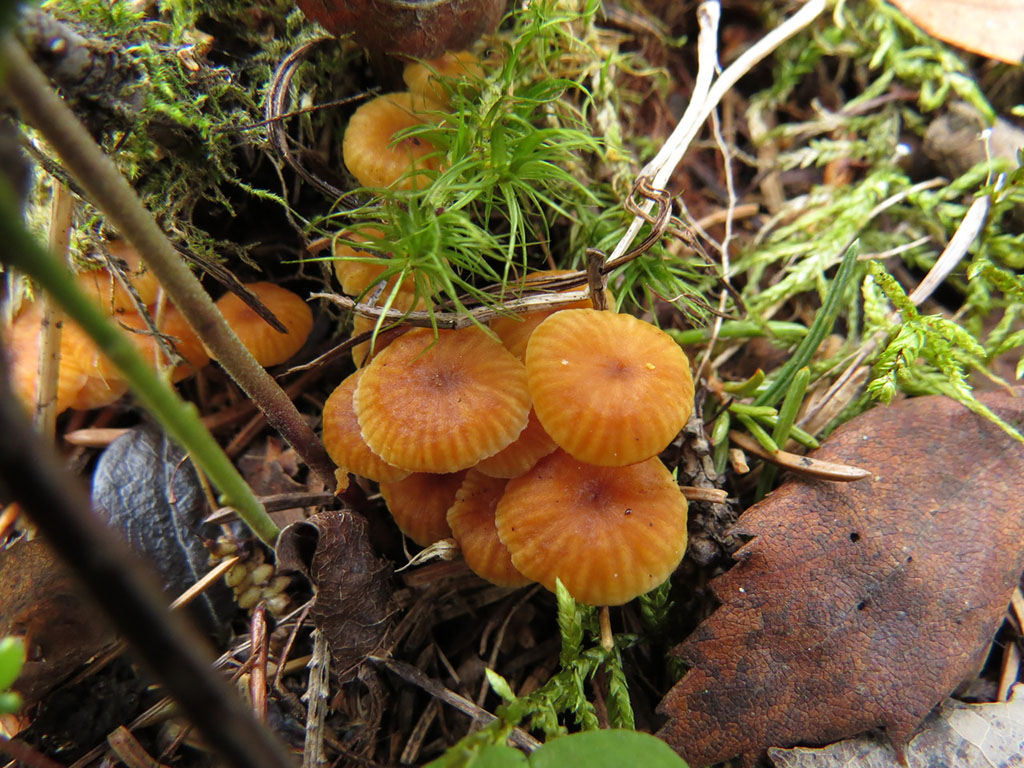Xeromphaline Kaufman: photo and description
| Name: | Xeromphaline Kaufman |
| Latin name: | Xeromphalina kauffmanii |
| Type of: | Inedible |
| Systematics: |
|
Xeromphaline Kaufman is a naturally occurring mushroom with a bizarre shape and color
It is important for novice mushroom pickers to find out whether it is edible or not, what it looks like, where it grows, and how to distinguish it from other representatives of the gifts of the forest
What do kaufman xeromphalines look like?
The Kaufman fungus belongs to the species Basidiomycetes lamellar and the class Agaricomycetes. It has a small fruiting body, a pronounced thin fleshy cap with translucent uneven edges. The diameter of their light brown or orange upper parts with a light white bloom reaches two centimeters.
Fruit bodies have distinctive external characteristics.
Where do kaufman's xeromphalines grow?
Representatives of the Kaufman family grow on stumps in spring. Most often they can be seen in coniferous forests on:
- spruce and juniper;
- cypress and cypress;
- thue and cupressocyparis;
- cryptomeria and yew;
- sequoia;
- araucaria;
- agatis;
- torrei;
- white fir;
- European larch;
- common pine.
They are found everywhere in places with high humidity. Varieties can also be found on moss-covered cedar trees.
Can i eat
There is no evidence that Kaufman's xeromphaline is edible. Therefore, they are unpleasant to use for food. Officially, fruiting bodies belong to the inedible group, and its other varieties are also classified as poisonous because of the unpleasant odor, hardness and "rubberiness" of the pulp.
How to distinguish xeromphalin kaufman
A special feature is the presence of alternating veins connecting the plates. Their color often coincides with the colors of the hats. Also different is the fact that they have white spore powder.
Fruit bodies grow in groups
There is a characteristic similarity between xeromphalin and omphalin, but the latter can often be found in soil and on moss. They look a bit like the scattered dung beetle shown in the photo below. The places of their habitats are the same.
Conclusion
Xeromphaline kaufman appears on stumps from early March to May. Has a characteristic orange-brownish color with a bloom. There is no data on edibility, so it is not eaten.
Xeromphaline bell-shaped
Xeromphaline bell-shaped - X. campanella (Fr.) Maire
The cap is 0.5-2 cm in diameter, first bell-shaped, then half-spread, depressed in the center, yellow-brown, with a reddish or rusty tinge, watery, membranous, striped along the edge. Descending plates, yellowish or creamy-buffy, may be of the same color as the cap. Stem 3-3.5 cm high, about 0.2 cm wide, slender, even, horn-shaped, at the top of the same color with a cap, at the bottom brownish, hairy-bristly.
Grows in large groups on stumps and dead trunks deciduous, less often conifers. June-October. Throughout Russia. Inedible.
Table 30
 |
Table 30 154 - bell-shaped xeromphaline; 155 - pure mycena; 156 - striped mycene; 157 - inclined mycene; 158 - blood-legged mycene; 159 - pink mycena.
Encyclopedia of the Nature of Russia. - M .: ABF. L.V. Garibova, I.I. Sidorov. 1999.
See what "Xeromphaline bell-shaped" is in other dictionaries:
Xeromphaline - Xeromphaline ... Wikipedia
Xeromphalina genus - Xeromphalina Kuehner et Maire Fruit bodies are small. Caps 0.5 to 2 cm in diameter, bell-shaped, with a dimple at the top, with a translucent striped edge. The plates descending along the stem, bowl of the same color with the cap. Spore powder is white. Legs ... ... Mushrooms of Russia.Directory
Mycena clean - Mycena pura (Fr.) Kumm see also Mycena genus Mycena (Fr.) S. F. Gray Pure mycena M. pura (Fr.) Kumm. The cap is 2 4 cm in diameter, bell-shaped in young ones, prostrate near mature fruiting bodies, ribbed along the edge, smooth, lilac pink or ... ... Mushrooms of Russia. Directory
Mycena striped - Mycena polygramma (Fr.) SF Gray see also Mycena genus Mycena (Fr.) SF Gray Mycena striped M. polygramma (Fr.) SF Gray Hat 1.5 2.5 cm in diameter, bell-shaped, ribbed, with a high tubercle, often with an uneven toothed ... ... Mushrooms of Russia. Directory
Inclined mycena - Mycena inclinata (Fr.) Quel see also Mycena genus Mycena (Fr.) S. F. Gray Inclined mycena M. inclinata (Fr.) Quel. The cap is 2 2.5 cm in diameter, bell-shaped, grayish-brownish. The discs are pronged, off-white. Leg 5 8 cm ... ... Mushrooms of Russia. Directory
Mycena blood-legged, red-legged Kshpsh - Mycena blood-legged, red-legged Mycena haematopoda (Fr.) The hat is 2 5 cm in diameter, bell-shaped, slightly striped, with ... ... Mushrooms of Russia. Directory
Mycena pink - Mycena rosella (Fr.) Kumm see also Genus mycena Mycena (Fr.) S. F. Gray Mycena pink M. rosella (Fr.) Kumm. The entire fruiting body is pink, later turns pale and becomes fawn. The hat is 0.7-1 cm in diameter, broadly bell-shaped, with a little ... Mushrooms of Russia. Directory
Table 30 - 154 xeromphalin campaniform; 155 mycene pure; 156 mycene striped; 157 inclined mycene; 158 blood-legged mycene; 159 pink mycena ... Mushrooms of Russia. Directory
Hat (mycology) - This term has other meanings, see Hat. Champignon caps Mushroom cap (lat. ... Wikipedia
Xeromphaline bell-shaped: description and photo
| Name: | Xeromphaline bell-shaped |
| Latin name: | Xeromphalina campanella |
| Type of: | Inedible |
| Synonyms: | Omphalina bell-shaped, Omphalina campanella |
| Specifications: |
|
| Systematics: |
|
Xeromphalina campanella or omphalina campanulate is a mushroom that belongs to the numerous genus Xeromphalina, the Mycene family. It has a hymenophore with rudimentary plates.
What do bell-shaped xeromphalins look like?
This mushroom is very small. The size of its cap is similar to 1–2 kopeck coins, and does not exceed 2 cm in diameter. The color of the bell-shaped xeromphaline is orange or yellowish-brown.
The hat has a rounded convex shape with a characteristic depression in the center, and is translucent at the edges. In older specimens, it can fully straighten or even curl upward. Rare plates descend along the pedicle; they are yellowish-orange or cream colored. On closer inspection, you can see the transverse veins connecting the plates to each other. The surface of the cap is smooth, shiny, radially striped due to the plates translucent from below, in the center its color is more saturated - dark brown, at the edges - lighter.
A very thin fibrous stem is 0.1-0.2 cm thick and 1 to 3 cm high. In the upper part it is colored yellow, and in the lower part it is orange-brown with fine white pubescence along the entire length. The leg has a cylindrical shape, slightly widened at the top, with a noticeable thickening at the base. The flesh of the mushroom is thin, reddish-yellow, without a pronounced odor.
Where do bell-shaped xeromphalins grow
They grow on decaying wood, most often pine or spruce. In the forest, they are found in numerous colonies. These mushrooms are typical for a natural zone with a temperate continental climate, where the average air temperature in July does not exceed 18 ° C, and the winters are severe and cold. The coniferous forests of these latitudes are called taiga. Bright orange caps are easy to spot on stumps in May.The fruiting season lasts from late spring to the end of autumn.
Is it possible to eat bell-shaped xeromphalin
Nothing is known about the edibility of the mushroom. Research in the laboratory has not been carried out, and experts do not advise trying to taste unfamiliar representatives of the mushroom kingdom, very similar to the deadly poisonous gallerinas. Due to its small size, the mushroom cannot be of nutritional value.
How to distinguish bell-shaped xeromphalins
The genus Xeromphalin has 30 species, of which only three are found in Western Siberia - K. bell-shaped, K. stalk-shaped, and K. Cornu. It is rather difficult to distinguish these mushrooms, the most reliable way is microscopic examination.
Xeromphaline bell-shaped differs from the other two representatives of its genus, growing on the territory of Russia, in earlier and longer fruiting. The other two species appear only in the middle of summer. These mushrooms also have no nutritional value due to their small size, they are inedible.
An inexperienced mushroom picker may confuse the bell-shaped xeromphaline with the deadly poisonous gallery bordered. However, the latter is slightly larger in size, its cap does not have a depression in the middle and transparency, due to which the lamellar hymenophore is well visible.
Conclusion
Xeromphaline campanulate grows in coniferous forests from May to November. Most often, the mushroom can be found in the spring, the first wave of fruiting is the most abundant. This species does not represent nutritional value due to its tiny size, and nothing is known about its toxicity.
Definitioner
- Basidia (Basidia)
-
Lat. Basidia. A specialized structure of sexual reproduction in fungi, inherent only in Basidiomycetes. Basidia are terminal (end) elements of hyphae of various shapes and sizes, on which spores develop exogenously (outside).
Basidia are diverse in structure and method of attachment to hyphae.
According to the position relative to the axis of the hypha, to which they are attached, three types of basidia are distinguished:
Apical basidia are formed from the terminal cell of the hypha and are located parallel to its axis.
Pleurobasidia are formed from lateral processes and are located perpendicular to the axis of the hypha, which continues to grow and can form new processes with basidia.
Subasidia are formed from a lateral process, turned perpendicular to the axis of the hypha, which, after the formation of one basidium, stops its growth.
Based on morphology:
Holobasidia - unicellular basidia, not divided by septa (see Fig. A, D.).
Phragmobasidia are divided by transverse or vertical septa, usually into four cells (see Fig. B, C).
By type of development:
Heterobasidia consists of two parts - hypobasidia and epibasidia developing from it, with or without partitions (see Fig. C, B) (see Fig. D).
Homobasidia is not divided into hypo- and epibasidia and in all cases is considered holobasidia (Fig. A).
Basidia is the place of karyogamy, meiosis and the formation of basidiospores. Homobasidia, as a rule, is not functionally divided, and meiosis follows karyogamy in it. However, basidia can be divided into probasidia - the site of karyogamy and metabasidia - the site of meiosis. Probasidium is often a dormant spore, for example in rust fungi. In such cases, probazidia grows with metabasidia, in which meiosis occurs and on which basidiospores are formed (see Fig. E).

See Karyogamy, Meiosis, Gifa.
- Pileipellis
-
Lat. Pileipellis, skin - differentiated surface layer of the cap of agaricoid basidiomycetes. The structure of the skin in most cases differs from the inner flesh of the cap and may have a different structure. The structural features of pileipellis are often used as diagnostic features in descriptions of fungi species.
According to their structure, they are divided into four main types: cutis, trichoderma, hymeniderma and epithelium.
See Agaricoid fungi, Basidiomycete, Cutis, Trichoderma, Gimeniderm, Epithelium.
- Cutis
-
The type of cap skin, consists of creeping non-gelatinized hyphae located parallel to the surface. The surface of the cap looks smooth.
Lat. Cutis.
See Gifa.
- Anastomoses (Anastomosis)
-
1) Fusion of cells of branched hyphae or germ tubes of germinating spores;
2) Connecting the plates of the fruiting bodies of the mushrooms with jumpers.
- Amyloid (Amyloid structure)
-
The structure is called amyloid if from Melzer's reagent (solution of 0.5 g of crystalline iodine + 1.5 g of potassium iodide + 20 ml of chloral hydrate + 20 ml of distilled water) turns blue, violet, sometimes almost black.
See Dextrinoid structure.

